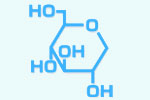11.Factors that cause an abnormal value

1,5-AG is excreted from glomeruli and reabsorbed almost 100% by tubules in normal subjects. As glomerular function is not directly involved in its kinetics, the value of 1,5-AG is reliable in patients with acute renal failure (Nephron 73, 707,1996), or early nephropathy (until stage 3 or creatinine < 2.0mg/dl) (Diabetes Care 35, 281, 2012, Clin Sci 88, 203, 1995). Although 1,5-AG is influenced by tubular dysfunction (Ann Clin Biochem 36, 749,1999, Diabetes Care 22, 863,1999), the value does not necessarily decrease in patients with proteinuria alone.
Sodium glucose transporter (SGLT) 2 inhibitors promote glucosuria, thus make 1,5-AG unusable as a glycemic marker. 1,5-AG, however, is originally a marker of amount of urinary glucose. Changes of 1,5-AG in low level can be a clue to assume food intake of a patient treated with SGLT2 inhibitor. In cases where HbA1c is decreasing but 1,5-AG is not increasing at all, urinary glucose is expected to increase due to increased feeding.
Onji, known as a kind of Kampo (Chinese herbal medicine), is contained a lot in Polygala. 100 years ago, 1,5-AG was discovered in Polygala.
